[Weekend read] Clean Energy in Africa has a Dirty Image Problem
A lot of the energy and climate world seems stuck using images that are tired clichés, in poor taste, or even straight-up racist.
This first appeared on the Energy for Growth Hub website and is co-authored with Sarah Jane Staats.
The New York Times ran a powerful op-ed last month by Rockefeller Foundation President Rajiv Shah arguing why every person needs enough energy to live a better life and have a decent job. Compelling words. But the accompanying photo?
The creepy image of monster-like hands grasping for a single lightbulb isn’t just weird. It’s the polar opposite of the argument in the article. Sadly, the prevalence of counterproductive and disrespectful imagery is all too common in climate and clean energy.
Poverty porn hasn’t been eradicated.
Ugandan-born writer Teddy Ruge defines poverty porn as "[finding] the most extreme situations and [making] it look like the most common situation on the continent." Thankfully, dehumanizing “flies in the eyes” photos of emaciated children that were common in humanitarian aid in the 1980s are less so today. Many development NGOs acknowledge racism and harmful stereotypes in the sector. They have codes of conduct to “choose images and messages that respect human dignity.” When they get it wrong, they’re likely to be called out by African critics and global social media campaigns – or parodied mercilessly.
Why then, are images about clean energy and climate policy in Africa still so… cringe?
We caught ourselves cringing so often at bad photos that our team started collecting them. We have dozens of examples from energy and climate reports, websites, and major conferences. They come from big institutions – the World Bank and United Nations are frequent offenders – as well as the private sector, small NGOs, philanthropy, and media. They range from cliché to patronizing to outright offensive.
It’s not just bad taste. Widespread use of these images misrepresents over one billion people – and does them a disservice by directly affecting policymakers’ understanding of the energy Africa needs to develop and respond to climate change. The nonprofit Africa No Filter estimates that the cost of persistent media stereotypes about Africa could be more than $4 billion per year thanks to their negative influence on financial flows and interest rates. We worry that the frequency of poor image choices also reinforce inadequate, small scale fixes – ultimately undercutting the opportunity African countries have to use modern energy to build prosperity and climate resilience.
Here are six common imagery trends we see as unhelpful and embarrassing to the field, plus one really big problem for solving global energy poverty.
1. It’s Africa so show an elephant. Or an acacia tree. Or smiling children. (Or all three.)
(The acacia tree obsession isn't limited to clean energy and climate. Have a look at these 36 book covers.)
2. No captions, no context, no consent.
More about captions, context, and meaningful consent from Claire Bracegirdle on Africa is a Country.
3. Extremely rural, remote, and poor.
This was digitally created by a leading philanthropy journal to accompany an article on how to build modern energy in Africa. Nevermind Africa is home to the world’s most rapidly growing cities and where most people live in urban areas.
4. Everything is awful…
5. …or everything is awesome. (Hey, kids, smile!)
6. What’s up with solar panels on donkeys?
While all these images are bad, the one myth that stands out for us is…
The single light bulb solution.
One bulb is life-changing for Africans…
…but unacceptable for Californians, Texans, and Brits.
Trevor Noah has a version of this game too: Spot the Africa.
We can do better
Our aim isn’t to shame one particular organization or instance; it’s to show the problem is widespread in the energy sector. It’s cringe — and we think it’s preventing faster progress towards the goal we all share: abundant, clean, and reliable energy for all people.
If you want to see our ideas for why we think the imagery problem persists and what might help, check out our follow up post, Can these tools make images about clean energy in Africa less cringe?
As always, let me know what you think.





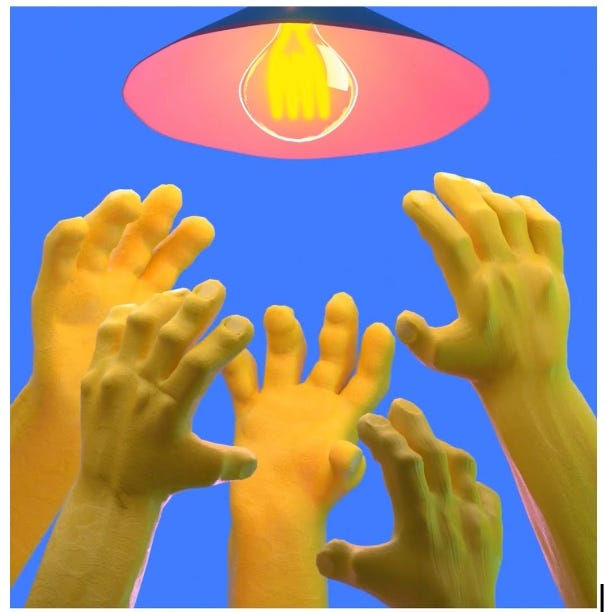



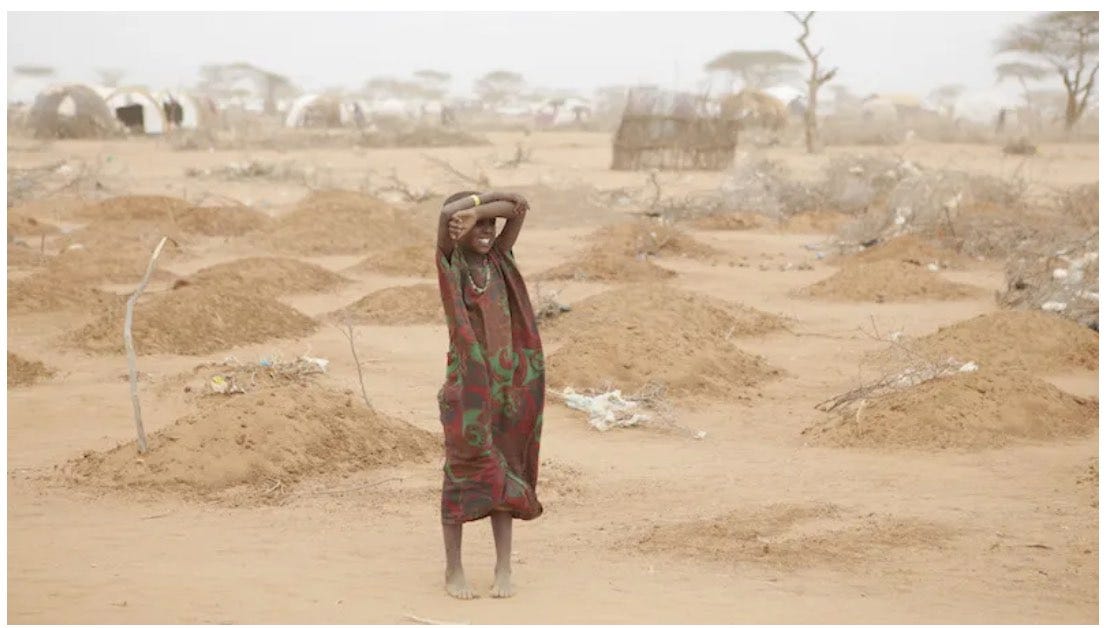
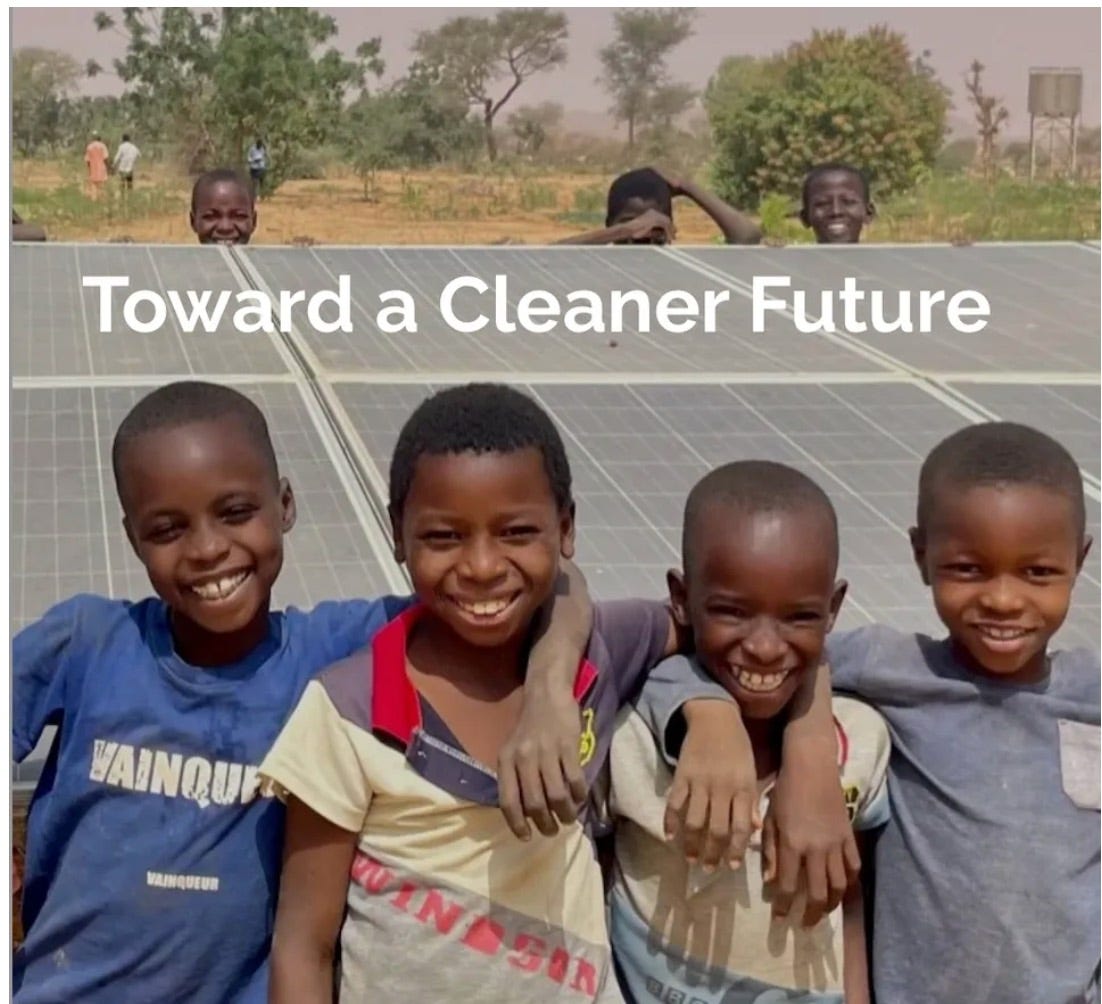

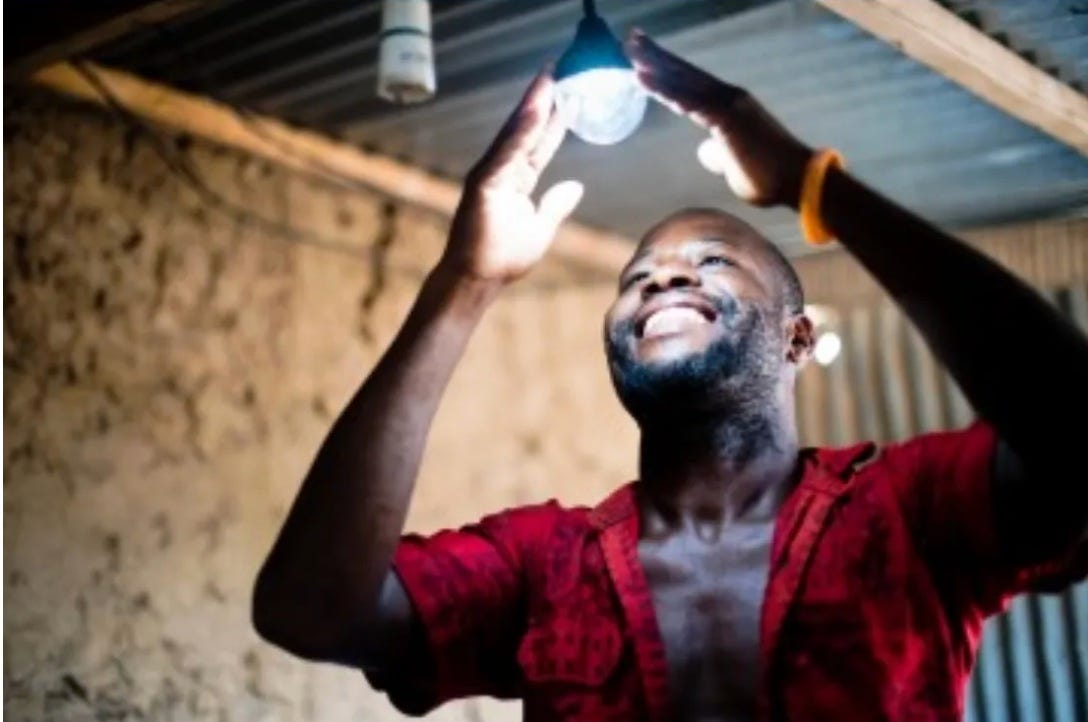
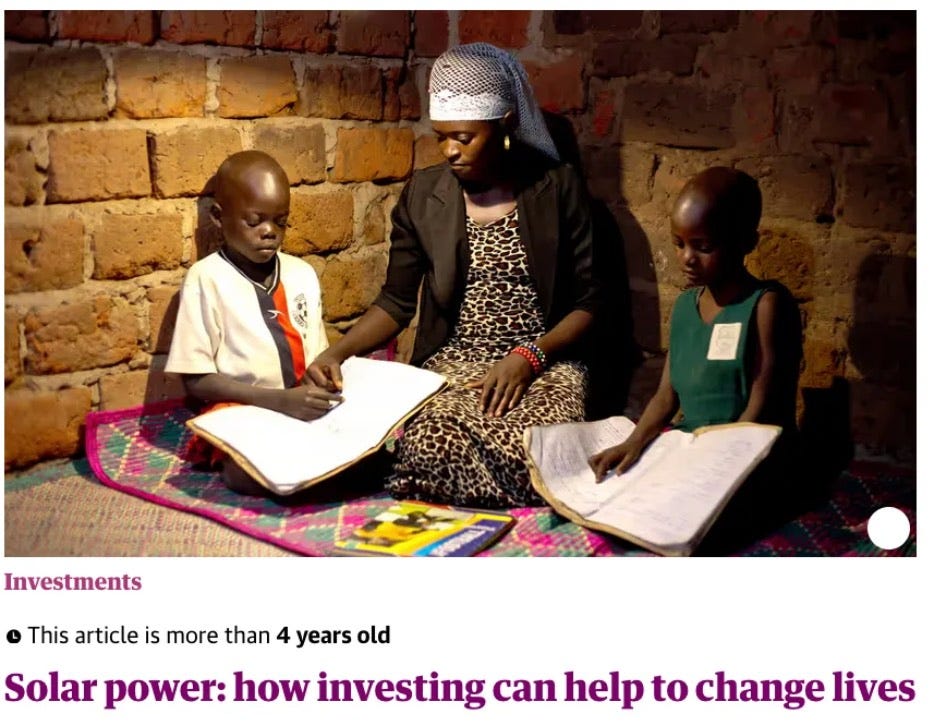

Another issue with the misrepresentation of Africa is that it is often reported as if it were a single country instead of 54, stretching from Cairo to Cape Town, with well over 1,000 different languages.
We Westerners would never conflate Norway, Portugal, Ukraine and Hungary as if they were the same country with identical standards of living, health, violence, infrastructure, access to energy, politics, and corruption.
Thanks for sharing this! I feel like I have seen at least two of these images in the past. I added you on X!